26th August, 2025
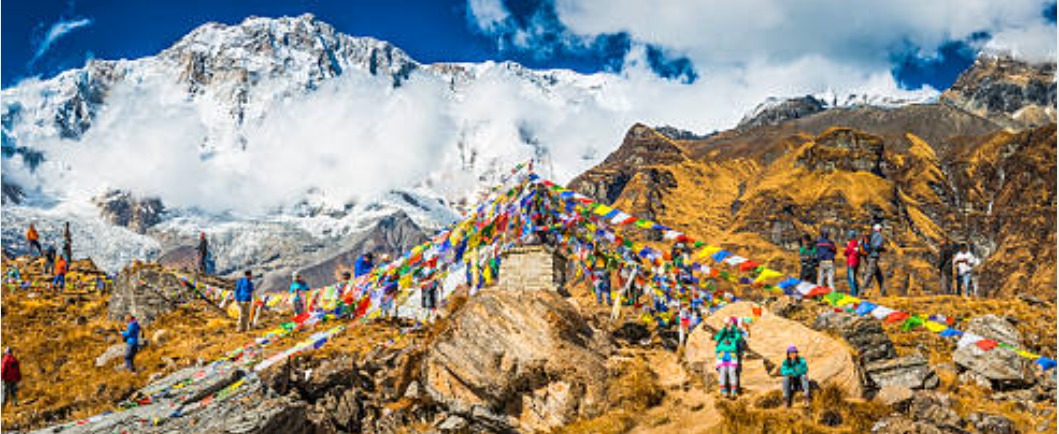
Sep 01, 2023
Annapurna Base Camp Trek In June
- Highlights of Annapurna Base Camp Trek in June
- Advantages of ABC Trek in June
- Why Choose June for the ABC Trek?
- Weather and Climate in June
- Route Overview and 12 Days Itinerary
- Preparation and Packing List
- Health and Safety Considerations for the Annapurna Base Camp Trek in June
- Accommodation and Facilities
- Permits and Regulations
- Local Culture and Villages
- Trekking Experience and Challenges
- Best Practices for a Sustainable Trek
- Conclusion
- Annapurna Base Camp Trekking packages
Embarking on the Annapurna Base Camp Trek in June offers a unique and captivating experience amidst the grandeur of the Himalayas. June, transitioning from late spring to early summer, presents a special time for trekkers to explore this iconic trail. The weather is relatively mild compared to the colder months, making it an excellent time to enjoy the trek's scenic beauty and diverse landscapes.
As you set out from Pokhara, the trek introduces you to a variety of terrains, from lush subtropical forests to rugged alpine meadows. The rhododendron and bamboo forests, still lush from the recent spring bloom, offer a vibrant backdrop to your journey. June's temperatures, although warmer, are comfortable for trekking, with daytime highs ranging from 10°C to 20°C (50°F to 68°F), and cooler nights at higher altitudes.
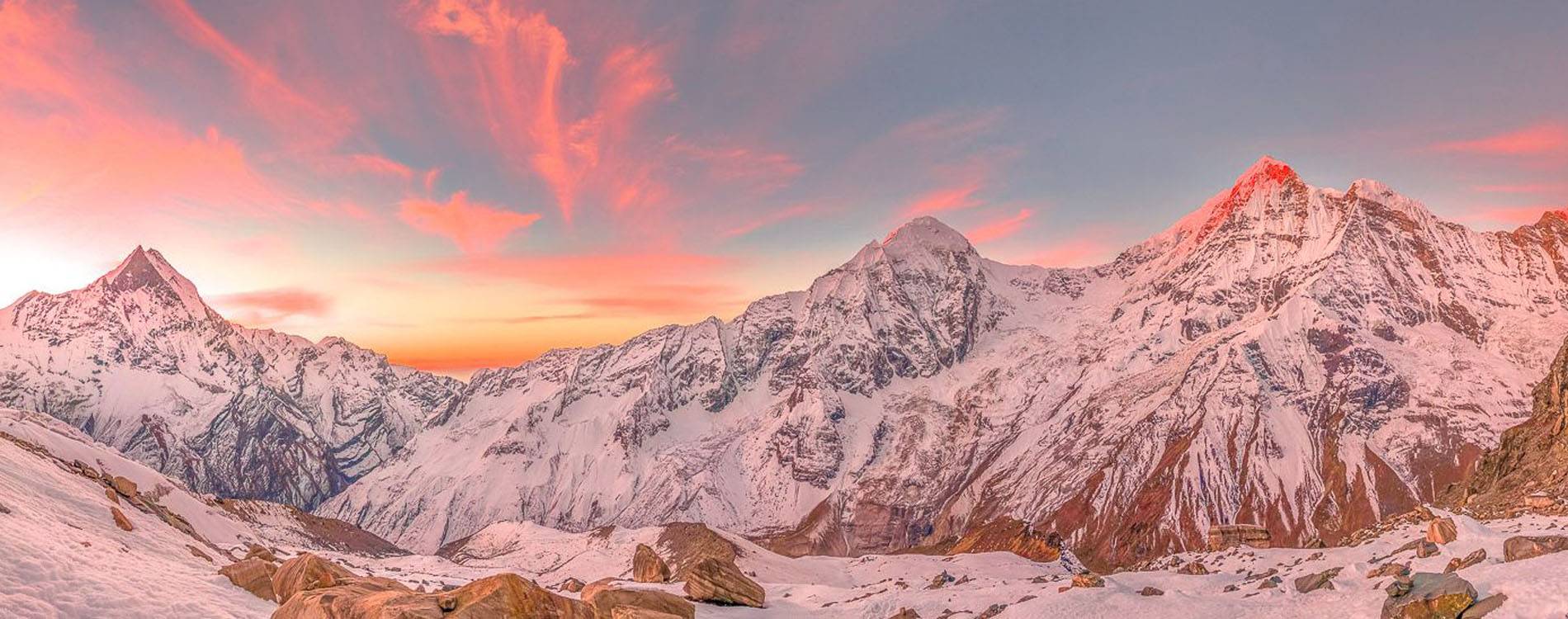
7 DAYS ANNAPURNA BASE CAMP TREK
Short on time – big on beauty!The 7 days Annapurna Base Camp Trek takes you to all the major attractions – but in less time than other treks to the Annapurna region. Take in the spectacular soaring sn...
The trail gradually ascends through traditional Gurung and Magar villages, providing insight into local culture and traditions. The Annapurna region is renowned for its breathtaking panoramic views, including the stunning Annapurna and Dhaulagiri mountain ranges. As you approach Annapurna Base Camp, the awe-inspiring sight of the vast Annapurna Sanctuary unfolds, surrounded by towering peaks.
While June is less crowded than the peak trekking seasons of spring and autumn, it's essential to be prepared for occasional rain showers, as June marks the beginning of the monsoon season. Proper gear and flexibility in your itinerary can help manage these conditions. Overall, the Annapurna Base Camp Trek in June offers a serene and rewarding adventure amid the Himalayan splendor.
Highlights of Annapurna Base Camp Trek in June
- Lush Greenery and Blooming Flora: June showcases the post-spring bloom with vibrant rhododendron forests and lush bamboo groves. The trails are enveloped in rich green foliage, providing a refreshing and picturesque environment.
- Mild Weather: Daytime temperatures range from 10°C to 20°C (50°F to 68°F), offering a more comfortable trekking experience compared to the colder winter months. This milder climate makes the trek more enjoyable and less strenuous.
- Clear Views of the Peaks: Early June often features clear skies, providing stunning, unobstructed views of the Annapurna and Dhaulagiri mountain ranges. The reduced snow cover at lower altitudes enhances visibility and the overall scenic experience.
- Less Crowded Trails: June is less busy than the peak trekking seasons of spring and autumn. This results in fewer trekkers on the trails and at tea houses, allowing for a more peaceful and intimate trekking experience.
- Dynamic Atmosphere: While June marks the beginning of the monsoon season, the occasional rain showers add a refreshing and dynamic element to the trek, contributing to the vibrant and lush landscape.
These highlights make the Annapurna Base Camp Trek in June a unique and appealing choice for trekkers looking to experience the Himalayas in a different light.
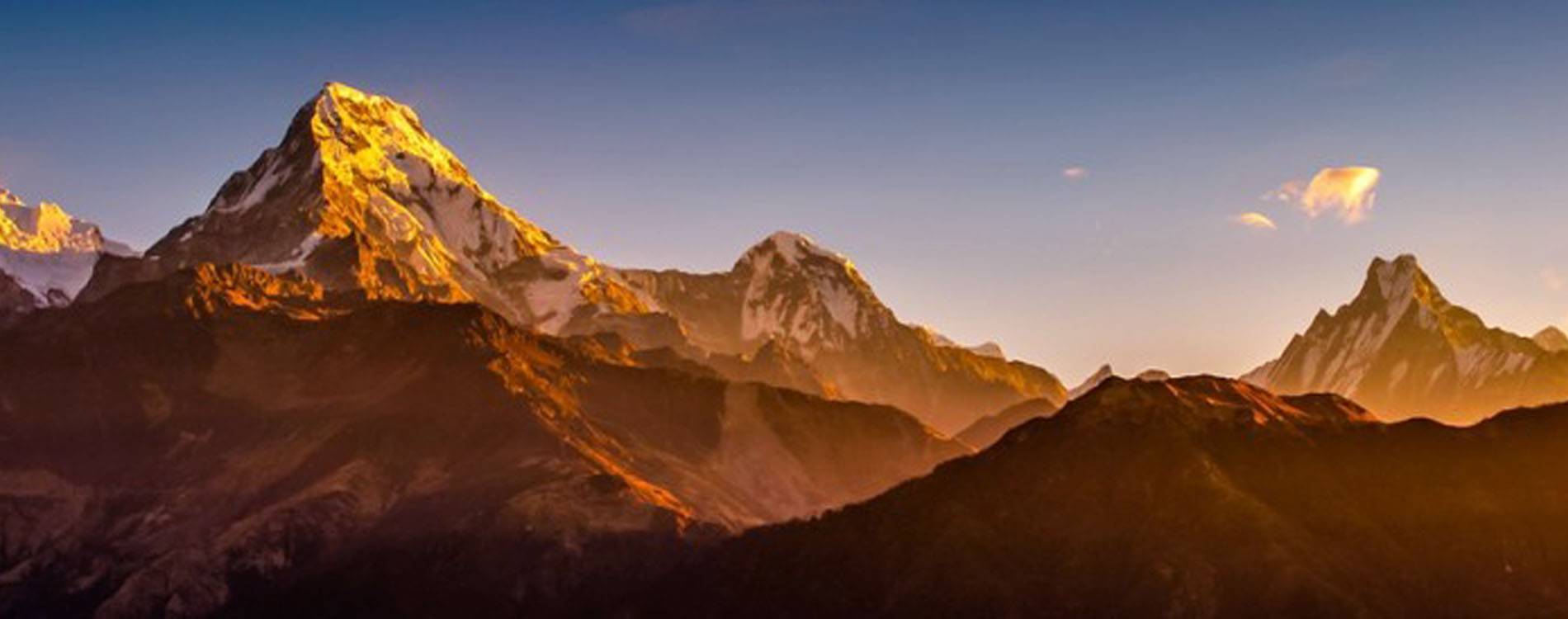
12 DAYS ANNAPURNA BASE CAMP TREK
DOUBLE THE ADVENTURE IN JUST 12 DAYS! The 12 Day Annapurna Base Camp Trek combines two well-known and popular treks into one - the Ghorepani Poon Hill Trek and the Annapurna Base Camp Trek (ABC)....
Advantages of ABC Trek in June
Trekking to Annapurna Base Camp (ABC) in June has several advantages that make it an appealing choice for adventurous travelers. One key benefit is the relatively mild weather. June temperatures range between 10°C to 20°C (50°F to 68°F) during the day, providing a more comfortable trekking experience compared to the colder winter months. This temperate climate is ideal for those who prefer avoiding the extreme cold or snow conditions.
Another significant advantage is the lush, green environment resulting from the recent spring bloom. The trails are beautifully adorned with vibrant rhododendron and bamboo forests, creating a scenic and refreshing atmosphere. The lush greenery contrasts with the dry, dusty trails typical of the autumn season, offering a different visual experience.
Additionally, June tends to be less crowded than the peak trekking seasons of spring and autumn. This reduced foot traffic means that trekkers can enjoy a more peaceful and intimate experience, with fewer people at the tea houses and along the trails.
However, it's important to note that June marks the beginning of the monsoon season, which can bring occasional rain showers. While this can add a refreshing aspect to the trek, it's essential to be well-prepared with appropriate gear and flexibility in your plans to accommodate any weather-related changes.
Why Choose June for the ABC Trek?
Choosing June for the Annapurna Base Camp (ABC) Trek offers several distinct advantages. One of the key reasons is the relatively mild weather. During this time, temperatures are generally comfortable, ranging from 10°C to 20°C (50°F to 68°F) during the day. This makes for a more pleasant trekking experience compared to the harsher conditions of winter. The trails are lush and green from the spring bloom, providing a vibrant and refreshing landscape that is less dusty than in autumn.
Moreover, June marks the beginning of the monsoon season, which means fewer trekkers on the trail compared to the peak seasons of spring and autumn. This results in a quieter, more serene experience with less crowded tea houses and trails. Although there may be occasional rain showers, these are usually manageable with the right gear. The reduced number of trekkers and the stunning, early monsoon scenery make June a unique and appealing time for the ABC Trek. Overall, the combination of favorable weather, lush landscapes, and fewer crowds makes June an attractive choice for adventurers seeking a more tranquil and immersive experience in the Himalayas.
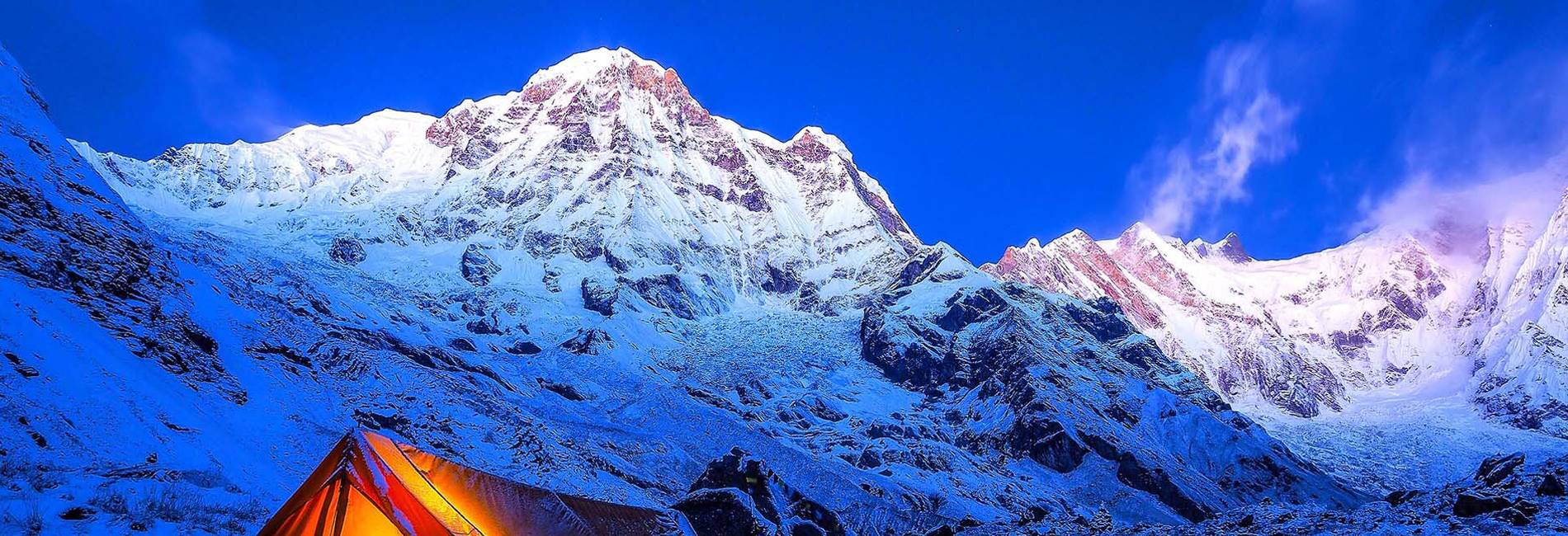
13 DAYS ANNAPURNA BASE CAMP TREK
Discover why “The Annapurna Base Camp (ABC) trek is world-famous. Here is a sample of soaring snow-capped peaks you will see along the trail: Mt. Dhaulagiri (8167m), Mt. Annapurna I (8091m) Mt. M...
Weather and Climate in June
In June, the weather and climate for the Annapurna Base Camp (ABC) Trek present a unique combination of mild temperatures and the onset of the monsoon season. Daytime temperatures typically range from 10°C to 20°C (50°F to 68°F), offering a comfortable trekking environment compared to the colder winter months. The warmer temperatures make the trek more enjoyable, reducing the need for heavy layers and allowing for more comfortable trekking conditions.
The beginning of June often features clear skies and excellent visibility, providing trekkers with unobstructed views of the Annapurna and Dhaulagiri mountain ranges. However, as the month progresses, the chances of rain increase due to the arrival of the monsoon season. While this brings occasional rain showers, these are usually intermittent and manageable with proper rain gear. The rainfall contributes to the lush greenery of the trails, enhancing the overall scenic beauty. Trekkers should be prepared for the possibility of mud and slippery conditions on the trails due to the rain. Overall, the combination of mild temperatures, clear early skies, and lush landscapes makes June a rewarding time for the ABC Trek, with the caveat of occasional monsoon-related weather changes.
Route Overview and 12 Days Itinerary
The Annapurna Base Camp (ABC) Trek typically spans 12 days, offering a comprehensive journey through diverse landscapes and cultures. Here’s a brief overview of a standard 12-day itinerary:
Day 1: Arrival in Kathmandu – Arrive in Kathmandu and prepare for the trek. Explore the city if time allows.
Day 2: Fly to Pokhara – Take a short flight from Kathmandu to Pokhara, a scenic city that serves as the starting point for the trek.
Day 3: Drive to Nayapul and Trek to Tikhedhunga – Drive from Pokhara to Nayapul and start the trek to Tikhedhunga, passing through terraced fields and small villages.
Day 4: Trek to Ghorepani – Ascend through lush forests and charming villages to reach Ghorepani, with a promising view of the Annapurna range.
Day 5: Hike to Poon Hill and Trek to Tadapani – Early morning hike to Poon Hill for sunrise views, then trek to Tadapani.
Day 6: Trek to Chhomrong – Descend to the Chhomrong Valley, a gateway to the Annapurna Sanctuary.
Day 7: Trek to Dovan – Continue through the Modi Khola Valley, passing diverse landscapes and reaching Dovan.
Day 8: Trek to Deurali – Ascend through bamboo and rhododendron forests to Deurali, close to the base camp.
Day 9: Trek to Annapurna Base Camp – Reach Annapurna Base Camp, enjoy the panoramic mountain views and the surrounding sanctuary.
Day 10: Return to Bamboo – Descend back through the sanctuary to Bamboo.
Day 11: Trek to Jhinu Danda – Continue to Jhinu Danda, where you can relax in natural hot springs.
Day 12: Return to Pokhara and Kathmandu – Trek to Nayapul, drive back to Pokhara, and then fly to Kathmandu.
This itinerary provides a balanced mix of trekking, cultural experiences, and opportunities to enjoy the stunning landscapes of the Annapurna region.

ANNAPURNA BASE CAMP TREK
The Annapurna Base Camp (ABC) Trek via Ghorepani Poon Hill Trek offers a truly unforgettable Himalayan adventure, combining stunning panoramic views with the rich cultural tapestry of the region. This...
Preparation and Packing List
Proper preparation and packing are crucial for a successful Annapurna Base Camp (ABC) Trek in June. Here’s a recommended packing list to ensure you're well-equipped:
Clothing:
- Base Layers: Moisture-wicking thermal tops and bottoms.
- Mid Layers: Lightweight fleece or insulating jacket.
- Outer Layers: Waterproof and windproof jacket and pants.
- Trekking Pants: Quick-drying and comfortable for long hikes.
- T-shirts and Long Sleeves: Breathable fabrics suitable for varying temperatures.
- Warm Hat and Gloves: For cooler temperatures at higher altitudes.
- Sun Hat and Sunglasses: Protection from the sun at higher elevations.
Footwear:
- Trekking Boots: Sturdy and waterproof with good ankle support.
- Camp Shoes: Lightweight sandals or sneakers for resting at the camps.
Gear:
- Backpack: Comfortable daypack for carrying essentials.
- Sleeping Bag: Rated for temperatures as low as -10°C (14°F).
- Trekking Poles: Useful for stability and reducing strain on knees.
- Water Bottle: Reusable and durable, plus water purification tablets.
Other Essentials:
- First Aid Kit: Basic supplies including medications for altitude sickness.
- Headlamp/Flashlight: With extra batteries.
- Camera: To capture the stunning scenery.
- Personal Hygiene Items: Biodegradable soap, toilet paper, and hand sanitizer.
- Snacks: Energy bars, nuts, and trail mix.
Documents:
- Permits: TIMS card and Annapurna Conservation Area Permit (ACAP).
- Travel Insurance: Covering trekking activities and altitude sickness.
By carefully preparing and packing these items, you’ll be ready to handle the diverse conditions and enjoy a safe, comfortable, and memorable trek to Annapurna Base Camp.
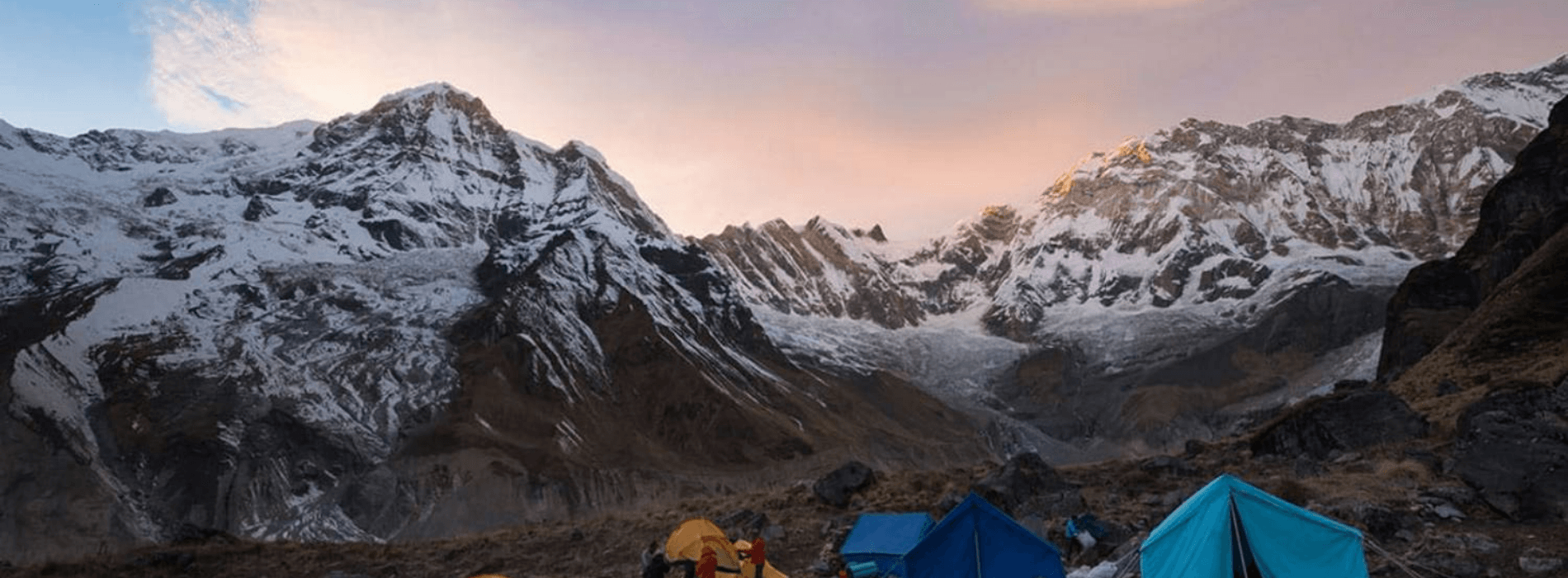
ANNAPURNA BASE CAMP TREK 6 DAYS
The 6 days Annapurna Base Camp Trek is an ideal adventure for those people who have a tight schedule but still want to experience the amazing landscape and the fascinating lifestyles of the Gurung cul...
Health and Safety Considerations for the Annapurna Base Camp Trek in June
When embarking on the Annapurna Base Camp (ABC) Trek in June, health and safety are paramount to ensure a successful and enjoyable journey. Here are key considerations to keep in mind:
Altitude Sickness: As you ascend to higher altitudes, the risk of altitude sickness increases. Symptoms can include headaches, nausea, and dizziness. To minimize this risk, ascend gradually, allowing your body to acclimatize. A common recommendation is to not exceed 300 meters (1,000 feet) of elevation gain per day. Staying hydrated and avoiding alcohol can also help.
Weather Preparedness: June is the beginning of the monsoon season, bringing occasional rain showers. Be prepared with waterproof clothing, including a high-quality rain jacket and pants, to stay dry and comfortable. The rain can cause slippery and muddy trail conditions, so proper trekking footwear with good grip is essential.
Hydration and Nutrition: Adequate hydration is crucial. Always drink purified water and carry water purification tablets. Eat a balanced diet with a mix of carbohydrates, proteins, and fats to maintain energy levels. Avoid consuming untreated water and be cautious with food hygiene to prevent gastrointestinal issues.
First Aid and Medical Supplies: Carry a basic first aid kit with supplies for treating common injuries and illnesses. Include medications for altitude sickness, pain relief, and any personal prescriptions. It’s also wise to have a plan for emergency evacuation if needed.
Travel Insurance: Ensure you have comprehensive travel insurance that covers trekking activities, including emergency evacuation and medical coverage. This provides an extra layer of safety and peace of mind.
By addressing these health and safety considerations, you can help ensure a safer and more enjoyable Annapurna Base Camp Trek experience.
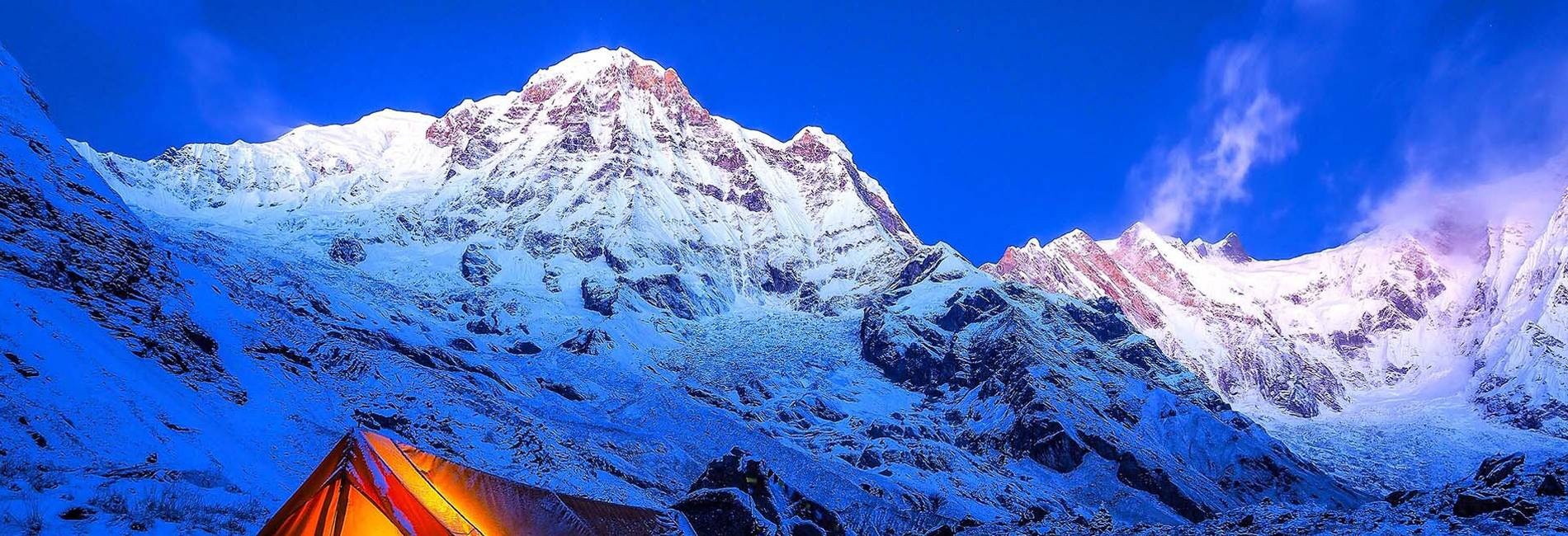
ANNAPURNA BASE CAMP TREK 8 DAYS
The 8 days Annapurna Base Camp Trek is the most popular and amazing trek in the Annapurna region which offers combines remarkable Himalaya vistas, traditional Gurung and Magar village life, and dense...
Accommodation and Facilities
Accommodation on the Annapurna Base Camp (ABC) Trek is primarily in tea houses, which are basic lodges providing essential amenities for trekkers. These tea houses offer simple rooms with twin beds and shared facilities, including communal bathrooms and dining areas. In the lower altitudes, such as in places like Tikhedhunga and Ghorepani, tea houses are relatively comfortable and well-equipped. However, as you ascend to higher elevations, like Chhomrong and Deurali, the facilities become more basic. Rooms may be smaller, and hot showers might not always be available.
Tea houses provide a variety of meals, usually including local dishes like dal bhat (rice and lentil soup), noodles, and potatoes. Some tea houses also offer western food options. Charging facilities for electronic devices are commonly available, though they may come with a small fee.
Wi-Fi is often available but can be slow and unreliable. It’s a good idea to bring some cash for expenses, as ATM access is limited on the trek. Despite the basic nature of the facilities, the warm hospitality of the local hosts and the opportunity to stay in remote locations add to the unique trekking experience.
Permits and Regulations
To trek to Annapurna Base Camp, you need to secure two essential permits: the Annapurna Conservation Area Permit (ACAP) and the TIMS (Trekkers' Information Management System) card.
Annapurna Conservation Area Permit (ACAP): This permit is required to enter the Annapurna Conservation Area, which protects the region’s natural and cultural resources. It can be obtained in Pokhara or Kathmandu, and the fee varies based on your nationality.
TIMS Card: This card helps track trekkers for safety purposes and ensures that emergency services can locate you if needed. The TIMS card can be issued by the Trekking Agencies' Association of Nepal (TAAN) or the Nepal Tourism Board (NTB).
It’s essential to carry these permits during the trek, as they will be checked at various checkpoints. Ensure that your permits are valid for the duration of your trek, and keep them easily accessible. Failure to obtain or carry the necessary permits can result in fines or denial of entry to certain areas of the trek.

ANNAPURNA BASE CAMP TREK 9 DAYS
The Annapurna Base Camp (ABC) (4130m) is also known as the "Annapurna Sanctuary Trek". This trek promises “in-your-face” unprecedented views of colossal Himalaya ranges, which include Hiunchuli, Macha...
Local Culture and Villages
The Annapurna Base Camp (ABC) Trek takes you through a region rich in cultural diversity and traditional village life. The trek passes through various ethnic villages inhabited by communities such as the Gurung, Magar, and Brahmin. Each of these communities has its unique customs, traditions, and lifestyles.
Villages like Ghandruk and Chhomrong are known for their vibrant local culture and traditional architecture. In these areas, you’ll encounter stone houses, terraced fields, and local temples. Interacting with villagers can provide insight into their daily lives, which often revolve around agriculture and traditional crafts.
Local festivals, such as Dashain and Tihar, are celebrated with great enthusiasm and offer a glimpse into the region’s cultural richness. Respecting local customs, such as removing shoes before entering homes or temples, is important. Engaging with the locals respectfully and learning about their traditions enhances the trekking experience and fosters cultural appreciation.
Trekking Experience and Challenges
The Annapurna Base Camp (ABC) Trek offers a diverse trekking experience with various challenges. The trek is moderately difficult, with daily ascents and descents across varied terrain, including steep inclines and uneven paths. Trekkers traverse through lush forests, terraced fields, and rocky trails, culminating in the stunning Annapurna Sanctuary surrounded by towering peaks.
Altitude is a significant challenge; the trek reaches up to 4,130 meters (13,550 feet) at the base camp. Proper acclimatization is crucial to avoid altitude sickness. Gradual ascent, hydration, and recognizing symptoms early can help manage this risk.
Weather conditions in June can be unpredictable, with occasional rain showers and slippery trails. Trekkers must be prepared for changing weather by carrying waterproof gear and sturdy footwear. Additionally, navigating muddy or wet sections requires caution to prevent slips and falls.
Overall, the trek’s challenges are balanced by breathtaking landscapes and the sense of achievement upon reaching the base camp. Proper preparation and a positive attitude contribute to a rewarding trekking experience.
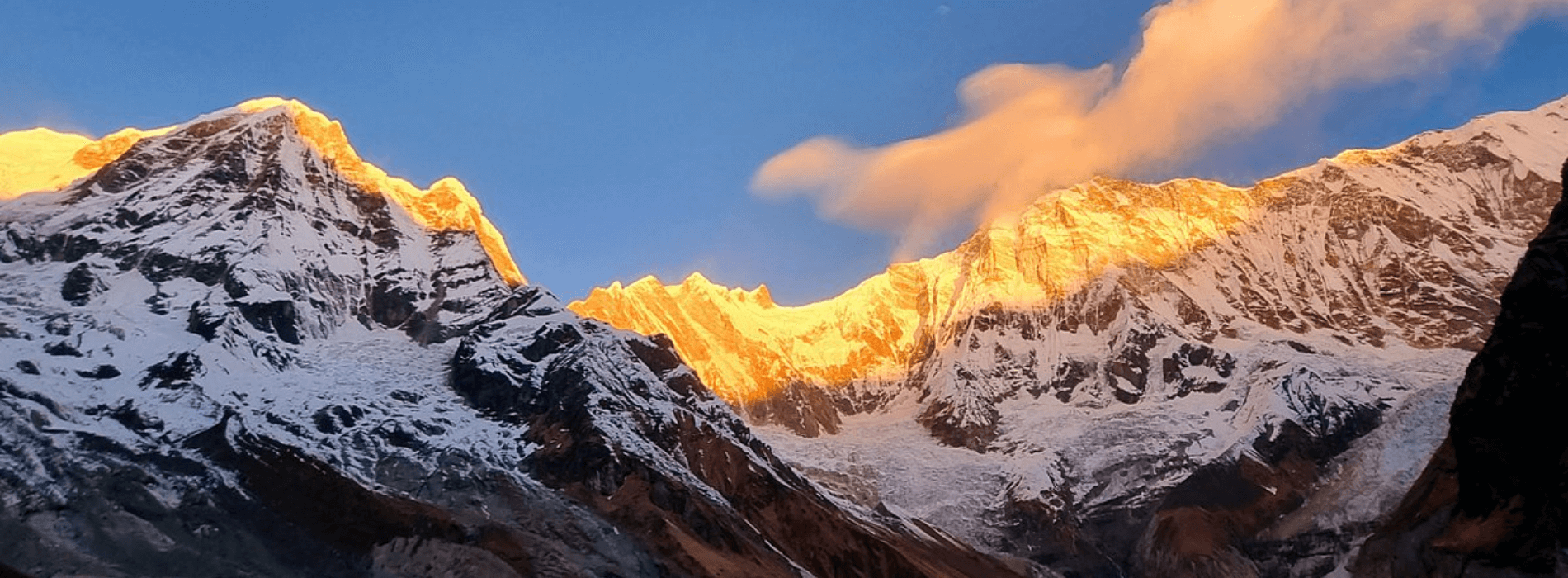
ANNAPURNA BASE CAMP TREK 10 DAYS
This 10 days Annapurna Base Camp (ABC) trek brings you into the heart of Nepal's Himalayas from the very being of the hike. With so many snow-capped peaks on the show, it is no surprise this one-week-...
Best Practices for a Sustainable Trek
Practicing sustainability on the Annapurna Base Camp (ABC) Trek is essential to preserving the natural environment and supporting local communities. Here are some best practices for a sustainable trek:
Leave No Trace: Carry all your waste, including food wrappers and personal trash, out of the mountains. Use waste disposal facilities provided at tea houses and make sure to pack out what you pack in.
Use Reusable Items: Minimize single-use plastics by using reusable water bottles, cutlery, and containers. Avoid buying bottled water by purifying water with tablets or a filter.
Respect Local Culture: Follow local customs and traditions, and ask for permission before taking photos of people. Respect religious sites and practices.
Support Local Economies: Purchase goods and services from local businesses and tea houses. This supports the local economy and ensures that the benefits of tourism are distributed within the community.
Conserve Water and Energy: Be mindful of water usage, especially in higher altitudes where resources are limited. Turn off lights and electrical devices when not in use.
By adhering to these practices, you contribute to preserving the beauty of the Annapurna region and ensuring that future trekkers can enjoy it as well.

ANNAPURNA BASE CAMP TREK 11 DAYS
The 11 day Annapurna Base Camp Trek is one of the most popular treks and destinations in Nepal and will take you into the protected Annapurna Conservation Area with its beautiful scenery and will give...
Travel Logistics
Travel logistics for the Annapurna Base Camp (ABC) Trek involve several key steps to ensure a smooth journey.
Getting to Nepal: Arrive in Kathmandu, the capital of Nepal, which is the main entry point for international travelers. From Kathmandu, you will need to take a domestic flight to Pokhara, the gateway to the trek.
Travel from Pokhara to the Trek Starting Point: From Pokhara, you can drive or take a short trek to Nayapul, the starting point of the ABC Trek. Most trekkers opt for a drive due to convenience.
Domestic Flights: Book your flight from Kathmandu to Pokhara in advance. Flights are often subject to weather conditions, so having a flexible schedule can be beneficial.
Transportation Within the Trek: Transportation on the trek is by foot. The trails are well-marked, but having a local guide or porter can enhance your experience and assist with navigation and carrying gear.
Returning to Kathmandu: After completing the trek, you will return to Pokhara and then fly back to Kathmandu. It’s advisable to allow some buffer time in Kathmandu for any potential flight delays or to explore the city before departing.
Proper planning of these logistical aspects ensures a hassle-free journey, allowing you to focus on enjoying the trek and the stunning landscapes of the Annapurna region.
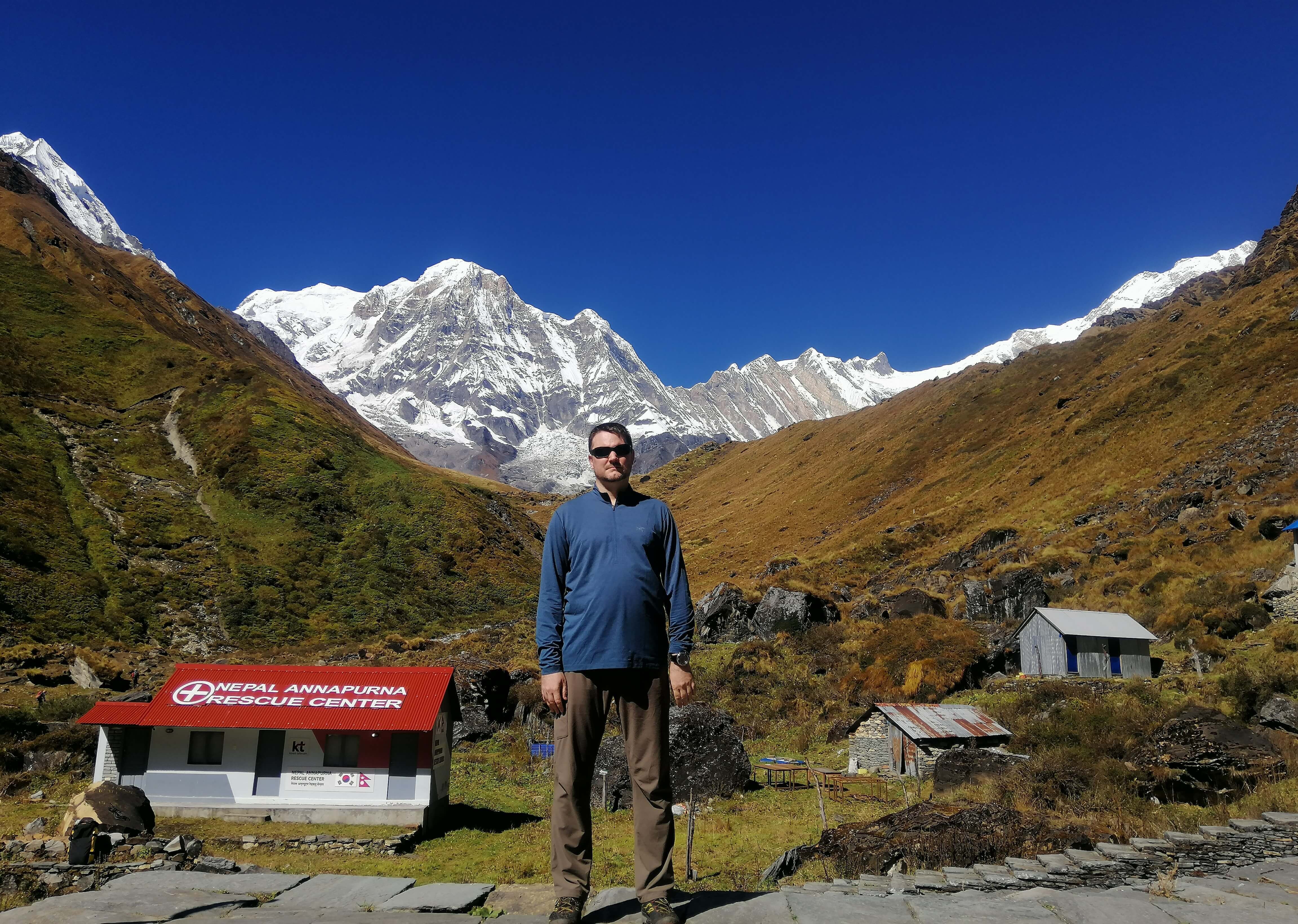
ANNAPURNA BASE CAMP TREK 16 DAYS
This 16-day Annapurna Base Camp Trek (ABC) in Nepal combines a visit to two of Nepal’s largest cities and high altitude trekking in the famous Annapurna Region. The trip starts from Kathmandu where yo...
Conclusion
The Annapurna Base Camp (ABC) Trek is a spectacular journey that combines breathtaking natural beauty, diverse landscapes, and rich cultural experiences. Choosing June for your trek offers the advantage of milder weather and lush greenery, although it also introduces the potential for rain showers as the monsoon season begins. Proper preparation, including understanding the weather, packing appropriately, and securing necessary permits, is crucial for a successful trek.
Accommodation and facilities along the trek are basic but sufficient, with tea houses providing essential amenities. Adhering to health and safety guidelines, including managing altitude sickness and being prepared for changing weather, enhances your trekking experience. Respect for local cultures and adherence to sustainable trekking practices contribute to preserving the region’s beauty and supporting local communities.
Effective travel logistics, from arranging flights to navigating the trek, ensure a smooth journey. With thoughtful planning and a positive attitude, the ABC Trek offers an unforgettable adventure through one of the most stunning regions of the Himalayas. Whether marveling at the panoramic mountain views or immersing yourself in local traditions, the Annapurna Base Camp Trek promises a rewarding and memorable experience.
Annapurna Base Camp Trekking packages
14 Days Annapurna Base Camp Trek
13 Days Annapurna Base Camp Trek
12 Days Annapurna Base Camp Trek
9 Days Annapurna Base Camp Trek
Any Questions? Let Us Know.
Recent Posts
17th June, 2025


















